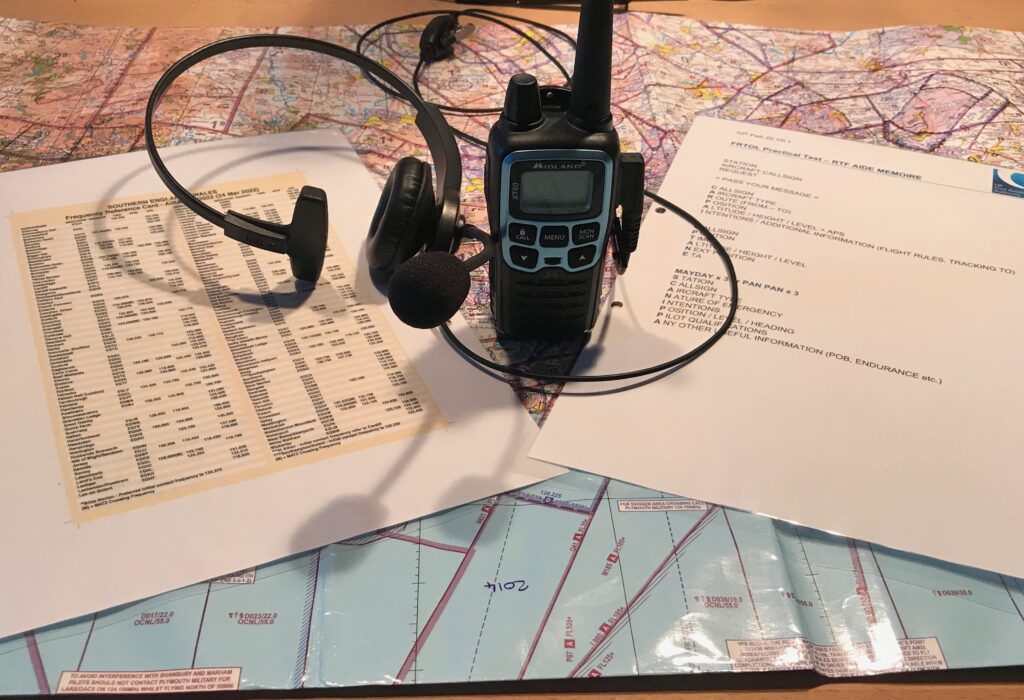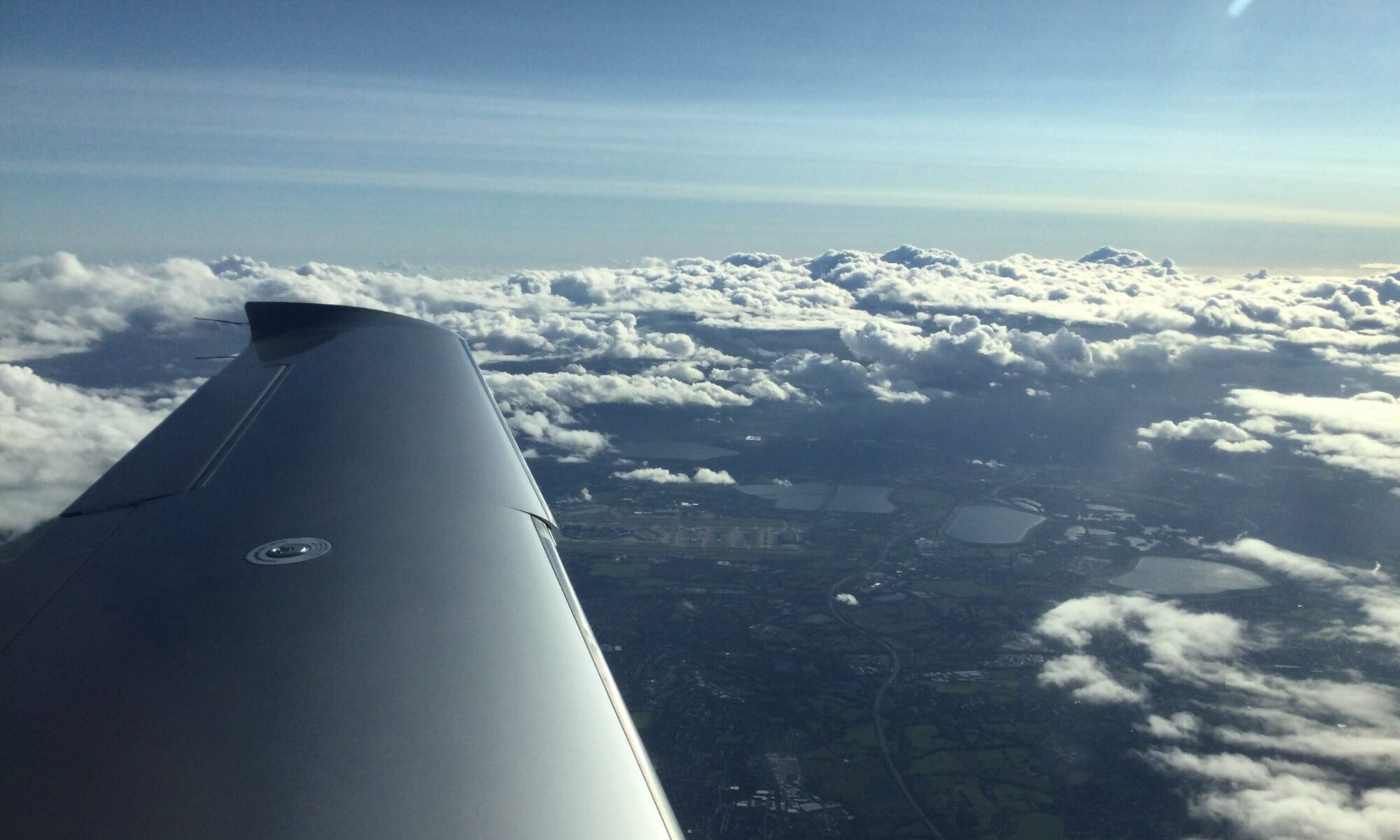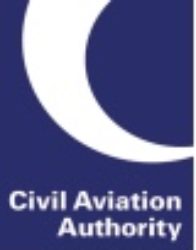
The FRTOL Practical test requires the candidate to have spent significant time training and rehearsing UK RTF procedures; somewhere between 10 and 15 hours is not uncommon.
Booking the FRTOL Practical Test
Bookings can be made directly with us. Prior to booking the practical test, please make sure you have thoroughly read the UK CAA’s Guidance for FRTOL Practical Test Candidates CAP 2325 and that you have completed and signed the SRG 1171 form* and have passed the Communications theoretical knowledge (TK) examination**. A signed SRG 1171 and proof of successful completion of the PPL Communication theoretical knowledge examination can be emailed to us when arranging the test or brought with you on the day of test.
*If you are not attending a recognised course of pilot training (e.g. glider pilots or those who wish to apply for a standalone FRTOL without holder or training for a flight crew licence), you may self-certify.
**If you need to sit your Communications theoretical knowledge (TK) examination, please add this to your order.
Candidates should allow up to 3 hours to complete their FRTOL Practical test, typically:
– Arrival and Document Checking – 15 minutes
– Initial Briefing – 10 minutes
– Route and Test Brief – 20 minutes
– Candidate Planning – 20 minutes
– The Practical Test – up to 60 minutes
– Scenario-Based Questions – 15 minutes
– Results and Debriefing – 10 minutes
– CAA Hot Topic Presentation – 10 minutes
– Post-Assessment Administration – 10 minutes
Arrival and Document Checking
Before commencing the FRTOL Practical test, candidates will need to produce the following items to the examiner:
1. Personal photo identification (e.g. passport or photo driving licence);
2. Completed and signed form SRG 1171;
3. Evidence of Communication theory examination pass by reference to eExams or Section 3 of form CAA 5016;
Note: Students undertaking flight training at an ATO or DTO must bring evidence by reference to UK CAA eExam certificate. An Instructor, Head of Training, Chief Flying Instructor or Flight Examiner is not permitted to complete and sign Section 2 of CAA 5013, as this section is intended for candidates undertaking a standalone FRTOL and taking the Communications theory exam in conjunction with the FRTOL practical test with the FRTOL Examiner.
4. Previous FRTOL Practical Test failure form SRG 2129 and SRG 1171; the latter is required if training is recommended or mandated after a previous test failure.
For the test, the examiner provides:
1. A Route Brief containing a completed lateral and vertical flight plan of the test route (including departure, destination, alternate, tracks, headings, altitudes, etc);
2. The Standard CAA Candidate Brief (CAP 2325 Appendix B);
3. Frequency Reference Card;
4. RTF Aide Memoire (CAP 2325 Appendix A);
…and the candidate provides:
1. A current edition CAA VFR 1:500,000 aeronautical chart;
2. Chart pens and rule;
3. Notepaper and pen.
CAA Candidate Briefing
The format of the assessment is as follows:
1. The examiner delivers the standard CAA Candidate Brief;
2. The examiner then discloses the test route to be undertaken, and the candidate is then given a short period of time (approximately 5 minutes) to plot the test route on the CAA VFR 1:500,000 aeronautical chart in readiness for the route and test brief;
Route Brief
The examiner then briefs the candidate on the following items:
1. The content of the standard Route Brief * ;
2. How emergencies will be initiated and cancelled;
3. The Frequency Reference Card to be used;
4. The RTF Aide Memoire;
5. How to use the testing platform ** ;
6. Any other required information.
*Andrews’s Aviation has produced six varied Route Briefs for use with the FRTOL Practical test, all of which are located in the Southern England & Wales (1:500,000 scale) chart coverage area.
**Andrews’ Aviation use a two-way voice radio system with audio recording and storage facilities. The candidate will be provided with a headset which incorporates the Press-To-Talk (PTT) function.
At this point, the candidate may ask questions, and the examiner will confirm the candidate’s understanding of the brief.
Candidate Planning
Once the examiner has completed the briefings, the candidate is allocated a further 20 minutes of planning time. Any notes made by the candidate during this planning time may be used during the practical test.
Simulated VFR Flight
The practical element of the test consists of a simulated VFR flight with a minimum of one turning point and includes the mandatory assessment items identified in the FRTOL Practical Test report form SRG 2160. In addition to the mandatory items (the grey-shaded boxes), the test includes a selection of optional assessment items from the SRG 2160 test report form.
The candidate may choose a standard UK aircraft registration to use as their call sign and nominate a suitable aircraft type, which will be agreed upon prior to the commencement of the test.
The candidate plays the role of a pilot who holds a flight crew licence, flying solo in a fully serviceable aircraft – with basic standard instruments, VHF aeronautical radio and transponder with altitude reporting.
Additional Assessable Questions (aka Scenario-Based Questions)
Once the simulated flight test is complete, the examiner will have an opportunity to probe the candidate’s understanding of CAP 413, the phraseology used during the test route, or elements unable to be assessed due to the candidate’s aircraft category.
Result and Debriefing
Following the practical test, whether passing or failing, the examiner will debrief the candidate. If a failure is awarded, the reasons for failure will be clearly explained. The examiner will then provide appropriate advice and guidance to assist the applicant in any future attempt.
UK CAA Hot Topic Presentation
Candidates who successfully pass the FRTOL Practical Test will receive a short CAA ‘Hot Topic’ presentation. This presentation aims to highlight and promulgate a current safety-related ‘Hot Topic’.
ICAO Language Proficiency
Andrews’ Aviation is approved to assess the candidate’s English language proficiency for Level 6 only, where appropriate. Candidates unable to satisfactorily demonstrate Level 6 proficiency are required to attend a CAA-approved English Language Assessment Centre. More information can be found here.
Please note also that candidates who have previously demonstrated less than Level 6 are required to return to a language school for reassessment, irrespective of their current displayed proficiency.

